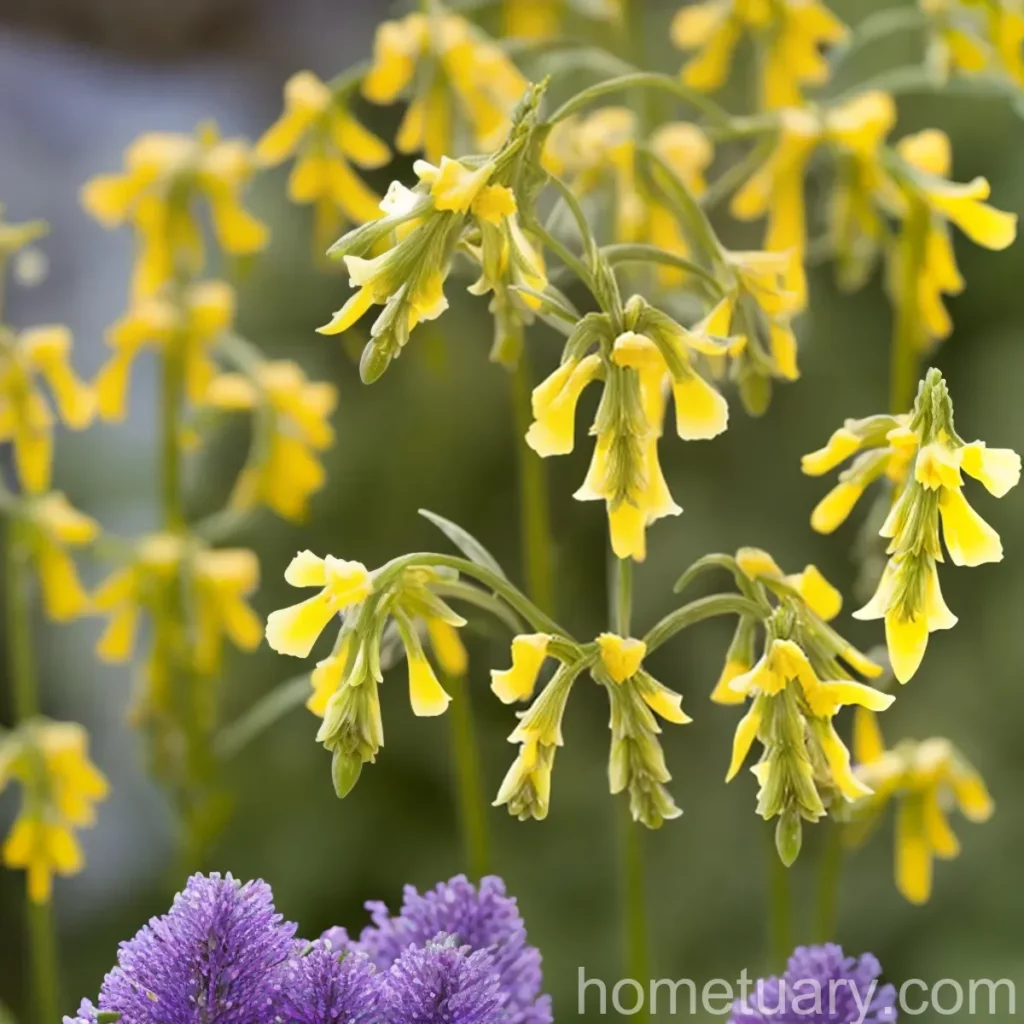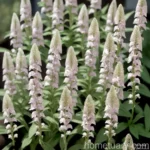The Pine-Leaved Penstemon (Penstemon pinifolius ‘Mersea Yellow’)
Penstemon pinifolius ‘Mersea Yellow,’ known as the pine-leaved penstemon, is a breathtaking perennial plant that belongs to the Plantaginaceae family. It is native to the Southwestern United States and is renowned for its vibrant yellow flowers that bloom profusely during the spring and summer. This striking plant is extremely popular among gardeners due to its ability to attract pollinators, its drought tolerance, and its beautiful aesthetic qualities.
In this comprehensive guide, we will delve into the various facets of the pine-leaved penstemon, including its culture, uses, water and sunlight requirements, fertilizer needs, soil preferences, pruning techniques, propagation methods, and common diseases and pests that affect it. Additionally, we will provide valuable insights from a botanist’s perspective, fun facts about the plant, and essential tips for its care and maintenance.
Let’s embark on a journey to explore the enchanting world of the pine-leaved penstemon and learn how to nurture it to perfection in your garden or landscape.
Key Takeaways
Before delving into the in-depth details, let’s summarize the key takeaways about the pine-leaved penstemon:
- Common Name: Pine-Leaved Penstemon
- Scientific Name: Penstemon pinifolius ‘Mersea Yellow’
- Family: Plantaginaceae
- Habit: Perennial
- Flower Color: Yellow
- Native Range: Southwestern United States
- Special Features: Drought Tolerant, Attracts Pollinators
With these essential details in mind, let’s explore the various aspects of the pine-leaved penstemon in detail.
Culture
The culture of the pine-leaved penstemon encompasses various factors related to its growth and propagation. Understanding its cultural requirements is fundamental to successful cultivation.
Uses
The pine-leaved penstemon boasts several noteworthy uses, making it a desirable addition to gardens and landscapes. Some of its primary uses include:
- Ornamental Purposes: The vibrant yellow flowers of the pine-leaved penstemon make it an exquisite ornamental plant, adding a pop of color to garden beds, borders, and containers.
- Pollinator Attraction: This plant is a pollinator magnet, drawing in bees, butterflies, and hummingbirds, thus contributing to the ecological balance of the garden.
- Xeriscaping: Due to its drought tolerance, the pine-leaved penstemon is an excellent choice for xeriscaping, where water-conserving plants are preferred. It thrives in arid and semi-arid climates and adds visual interest to water-wise landscapes.
Water
As a drought-tolerant plant, the pine-leaved penstemon exhibits excellent water-saving qualities. However, during its initial establishment period, regular watering is crucial to ensure healthy growth. Once established, it requires minimal to moderate watering and is an ideal choice for water-wise gardening.
Sunlight
The pine-leaved penstemon thrives in full sun to partial shade. It flourishes in bright, sunny locations and can adapt to moderately shaded areas. However, to ensure abundant flowering, providing it with ample sunlight is recommended.
Fertilizer
This plant does not have extensive fertilizer needs. A balanced, all-purpose fertilizer applied in early spring can support its growth and blooming. However, excessive fertilization should be avoided as it can lead to overly lush foliage at the expense of flower production.
Soil
The pine-leaved penstemon prefers well-draining soil with a slightly acidic to neutral pH. It is adaptable to various soil types, including sandy, loamy, or rocky soils, as long as they offer good drainage. Amending the soil with organic matter can enhance its overall quality and drainage.
Pruning
Pruning is not a frequent necessity for the pine-leaved penstemon. However, removing spent flowers can encourage the plant to produce more blooms. Additionally, light pruning in early spring can help maintain a compact and tidy growth habit.
Propagation
Propagation of the pine-leaved penstemon can be achieved through various methods, including:
- Seeds: The plant produces viable seeds that can be collected and sown in well-prepared seed-starting trays. They require light for germination and should be planted at the soil surface.
- Division: Mature plants can be divided in early spring or fall to create new, identical specimens. Each division should have a good root system and several stems for successful establishment.
Container Popularity
The pine-leaved penstemon is well-suited for container cultivation, making it a versatile choice for patio gardens, balconies, and other confined spaces. Its attractive foliage and vibrant flowers beautify outdoor living areas and complement other container plants.
Common Diseases and Pests
Though generally resilient, the pine-leaved penstemon is susceptible to certain diseases and pests that can affect its health and vigor. Understanding these potential threats is pivotal to implementing effective management strategies.
Common Diseases
The following are some of the common diseases that may afflict the pine-leaved penstemon:
- Powdery Mildew: This fungal disease manifests as a powdery, white coating on the plant’s foliage, typically in humid conditions. Adequate air circulation and fungicidal treatments can help prevent and manage powdery mildew.
- Root Rot: Overly wet soil can lead to root rot, causing the plant’s roots to decay. Well-draining soil and proper watering practices are crucial in preventing this detrimental condition.
Disease Diagnosis
Diagnosing diseases in the pine-leaved penstemon involves careful observation of the plant for any signs of distress, discoloration, or abnormal growth. Regular inspection can aid in the early detection of diseases, facilitating prompt intervention and effective management.
Common Pests
Several pests can pose a threat to the pine-leaved penstemon, including:
- Aphids: These tiny insects feed on plant sap, causing stunted growth and distorted foliage. Insecticidal soaps or horticultural oils can effectively control aphid infestations.
- Spider Mites: These minuscule pests can cause webbing on the plant, leading to reduced vigor and yellowing of leaves. Miticides can help mitigate spider mite infestations.
Understanding the signs and symptoms associated with these pests is pivotal to timely pest control measures.
Botanist’s Tips
As a plant scientist, I have garnered valuable insights into the cultivation and care of the pine-leaved penstemon. Based on my expertise, here are some essential tips for nurturing this captivating plant:
- Water Wisely: While the pine-leaved penstemon is drought-tolerant, providing adequate water during its establishment phase fosters strong root development.
- Sunlight Optimization: Position the plant in a location that receives ample sunlight to promote abundant flowering and compact growth.
- Avoid Overfertilization: Excessive fertilization can lead to excessive foliage growth at the expense of flowers. Adhere to moderate fertilization practices.
- Prune with Precision: Light pruning after the flowering period can enhance the plant’s aesthetic appeal and encourage further blooming.
- Monitor for Pests: Regularly inspect the plant for signs of pest infestations and implement targeted control measures when necessary.
- Support Wildlife: Embrace the role of the pine-leaved penstemon as a pollinator-friendly plant that nourishes and supports beneficial insects and birds in the garden ecosystem.
Fun Facts
The pine-leaved penstemon is not only a visually stunning plant but also harbors fascinating attributes and associations. Here are some fun facts about this remarkable perennial:
- The specific epithet “pinifolius” in its scientific name means “pine-leaved,” alluding to the slender, needle-like leaves that resemble those of pine trees, adding to its unique appeal.
- It is a cherished plant among native bee species, attracting them with its nectar-rich flowers and serving as an essential food source for these crucial pollinators.
- The pine-leaved penstemon has been historically utilized in traditional herbal medicine by Indigenous tribes for various medicinal purposes, underscoring its cultural and medicinal significance.
These intriguing facts contribute to the allure and allure of the pine-leaved penstemon, enriching its narrative and appeal in horticultural circles.
As we’ve delved into the intricate details of the pine-leaved penstemon, from its cultural requirements to its disease management and fascinating trivia, it’s evident that this plant holds a distinct charm and botanical significance. Whether adorning a xeriscape garden, attracting pollinators, or enhancing a container display, the pine-leaved penstemon stands out as a resilient and captivating perennial that enriches any horticultural setting.
To further expand your knowledge and appreciation of this remarkable species, explore the following external resources:
The journey of tending to the pine-leaved penstemon is indeed a fulfilling and enriching venture, encapsulating the intricate tapestry of nature’s wonders and the art of horticulture. Embrace the beauty and resilience of this exceptional plant, and let it grace your garden with its golden blooms and enduring charm.
References:
– Fritz, R. S., & Hochwender, C. G. (2005). Outcrossing rates and estimates of mating system parameters of Penstemon pinifolius (Pinaceae) using allozymes. American Journal of Botany, 92(7), 1090-1093.
– Miller, R. A., Krannitz, P. G., & McKnight, K. (2002). Soil organic matter dynamics and plant interactions in the Colorado alpine: possible feedbacks under changed climate. Integrative assessment of ecosystem consequences of forest disturbance and management in the western United States, 73-88.















